
The Jetboil Zip is a complete canister stove system that includes an insulated cooking pot, top lid, stove burner, measuring cup, and stand. It's large enough to carry a small-sized 100 g canister inside and packs together into a small and compact unit that's easy to carry in a backpack. The Zip is designed to boil water so you can rehydrate freeze-dried or dehydrated backpacking meals and make hot drinks. Sized for a single person, it's a complete, but bare-bones stove system that'll get the job done for three season use. The value of this product is in the tight integration of its components and its small size, which makes it easier to pack.
Specs at a Glance
- 0.8 liter cook pot and cozy
- Weight: 12 oz (without stabilizer)
- Material: aluminum
- Stove BTUs: 4500
- Pressure regulator: no
- Piezo ignition: no
- Boil time: 2 m 30 sec per 0.5 liter (on average)
- Water boiled: 12 liters per 100 g Jetpower fuel canister (24 x 0.5L boils)
Boiling Water
The Jetboil Zip is really good for heating up water fast. In fact, that's all it's really good for. If all you need to do is boil water for drinks, re-hydrate freeze-dried, or home-packaged freezer-bag meals, the Zip will work admirably for your needs. I'd guess that describes about 95% of the backpacking population, which explains why this stove is so popular.
The Zip is not designed to simmer or fry food, although I'm sure its been done. The valve that feeds gas into the stove has a short black plastic knob that is hard to grasp while the stove is on or to finely control the flame size. Other Jetboil stoves systems, such as the Jetboil Flash, Jetboil MicroMo, and Jetboil MiniMo have a longer wire handle that is safer and easier to turn while the stove is running.
The Zip is also limited by the amount of water you can boil at a time, since it has a small 0.8 liter pot. Even then, you'll be limited to boiling about a half liter (16 oz) at a time to prevent a dangerous boil over. On the flip side, the Zip can boil a 1/2 liter of water quite fast, in 2 min 30 sec on average. If you need more water, you simply boil it.

Jetboil Zip Stove
The Zip's stove is pretty bare-bones compared to the other system stoves in the Jetboil product line (see below). For example, it doesn't have a push-button piezo igniter, so you'll need to light your stove with matches, a lighter, or a sparker. Piezo igniters have a tendency to fail over time, so not having one isn't a huge loss.
While the Zip can boil water relatively fast, the stove is only rated for 4500 BTUs, compared to the much faster and more expensive Jetboil Flash, which is a 9000 BTU stove. The Zip also doesn't have a pressure regulator, like the Jetboil Sumo, Jetboil MicroMo, or Jetboil MiniMo. A pressure regulator helps ensure that the size of flame stays the same, even as the contents of a canister are used up. It's a nice-to-have feature, especially for colder weather, but not an essential if you backpack and camp in warmer weather. Worst case, you'll need to wait longer for your water to boil when your fuel canister gets close to empty. That's not the end of the world, either.
The base of the stove has a Lindal B188 valve that screws onto threaded isobutane gas canisters. Most of the fuel canisters you can buy in the US are compatible with a Lindal valve including Jetboil JetPower Fuel, MSR IsoPro, and Snow Peak Gigapower Fuel.

Jetboil Zip Pot
The Zip's pot is made with aluminum and is wrapped in an insulated neoprene cozy to conserve heat and fuel. The cozy also has a webbing handle so you can safely grip the pot and pour from it. The top of the pot has a black plastic lid perforated with a pour spout and colander holes. It fits rather well and will stay closed inside your backpack.
If you want to cook noodles in a Zip, the best way to do it is to bring your water to a boil, turn off the stove, drop in your noodles, cover the top and let them rehydrate. There's no need to simmer ramen noodles or pasta, which can simply cook by soaking (See Forget Boiling: How to Cook Dried Pasta and Stretch Your Stove Fuel)
The interior of the pot has etched fluid measurements in milliliters (max of 500 ml ) and ounces (max of 16 oz). The base of the pot also has flanges that lock onto the stove when the burner is in use. This ensures an optimal distance between the flame and the bottom of the pot, while helping to prevent the pot from being accidentally knocked off the stove.
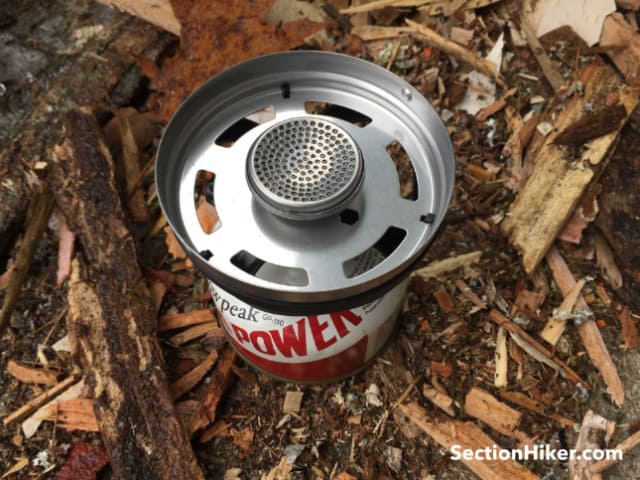
The bottom of the pot has heat retention fins that retain heat that would otherwise be lost after the flame has come into contact with the pot, and provide a modest amount of wind protection. They're surrounded by a reinforced cage, which locks onto the stove with specially shaped flanges, when used.
Jetboil Zip Cup
The Jetboil Zip comes with an 8 oz plastic measuring cup that can be used as a drinking cup or bowl. It snaps onto the bottom of the pot when packed and has fluid measurements on the inside. This measuring cup is not made with the most durable plastic and it is easy to lose. I know this from experience. I cracked both of the cups that came with my last two Jetboils and stopped carrying them with the stove. If you're comfortable eating and drinking directly from the cook pot, there's no need to carry the additional cup.
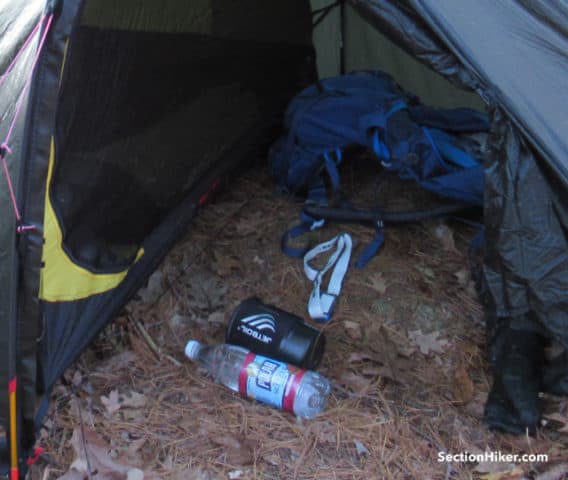
Jetboil Stabilizer
Canister stoves systems, by their nature, can be tippy. So Jetboil includes an orange pot stabilizer with the Zip that snaps onto small or large fuel canisters. The stabilizer legs folds up neatly, so you can store it in the pot with a 100 gram fuel canister and the stove when you pack the Zip up.
The stabilizer is another component that you can leave at home if you're careful, although it helps to fill in the space it takes in the cook pot to reduce any rattling when you're hiking.
Jetboil Cook Systems Comparison
| Make / Model | Weight | Pot Volume | Piezo Ignition | Regulator | Boil Time* | Price |
|---|---|---|---|---|---|---|
| Jetboil Zip | 12 oz | 0.8L | No | No | 2:30 | $80 |
| Jetboil Flash | 13.1 oz | 1L | Yes | No | 1:40 | $100 |
| Jetboil MicroMo | 12 oz | 0.8L | Yes | Yes | 2:15 | $130 |
| Jetboil MiniMo | 14.6 oz | 1L | Yes | Yes | 2:15 | $135 |
| Jetboil Sumo | 16 oz | 1.8L | Yes | Yes | 2:08 | $140 |
Recommendation
The Jetboil Zip Cook System boils water quickly and efficiently for making hot drinks or rehydrating pre-packaged backpacking meals. While it lacks the features of Jetboil's more expensive cooking systems, it's perfectly sufficient for multi-day backpacking trips or thru-hikes. Compact, lightweight, and self-contained, the pot is large enough to store a 100 g fuel canister together with the stove and accessories so you can stay organized on trips. If you need to cook for multiple people or want to be able to cook more complex 1-pot meals, you'd be better off getting a higher volume Jetboil cooking system or cook pot (since Jetboil components are interchangeable) because they can hold more liquid.
Compare 4 Prices
-
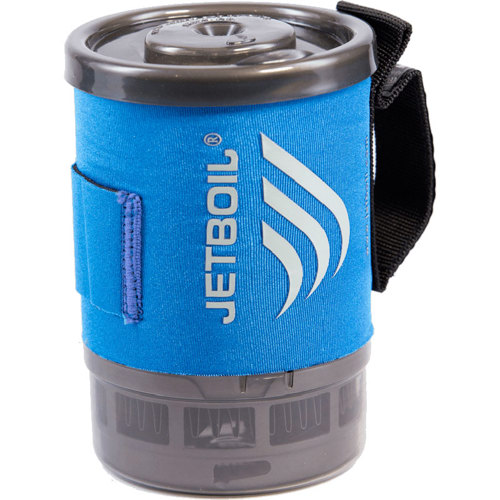
 Sunny Sports $9.95View
Sunny Sports $9.95View -

 Amazon US $69.95View
Amazon US $69.95View -
 REI.com $79.95View
REI.com $79.95View -
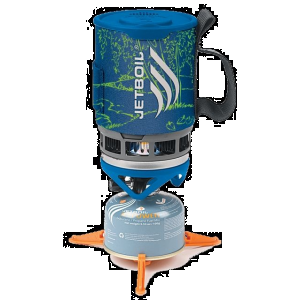
 CampSaver.com $79.95View
CampSaver.com $79.95View -
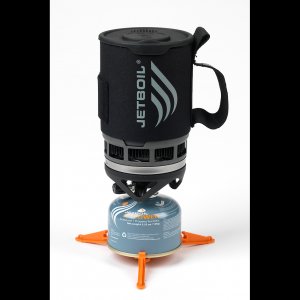
 Eastern Mountain Sports $79.95View
Eastern Mountain Sports $79.95View
Disclosure: The author purchased this stove.
Editor's note: Help support this site by making your next gear purchase through one of the links above. Click a link, buy what you need, and the seller will contribute a portion of the purchase price to support SectionHiker's unsponsored gear reviews, articles, and hiking guides.The post Jetboil Zip Stove Review appeared first on Section Hikers Backpacking Blog.
from Section Hikers Backpacking Blog https://ift.tt/2rH478j
No comments:
Post a Comment